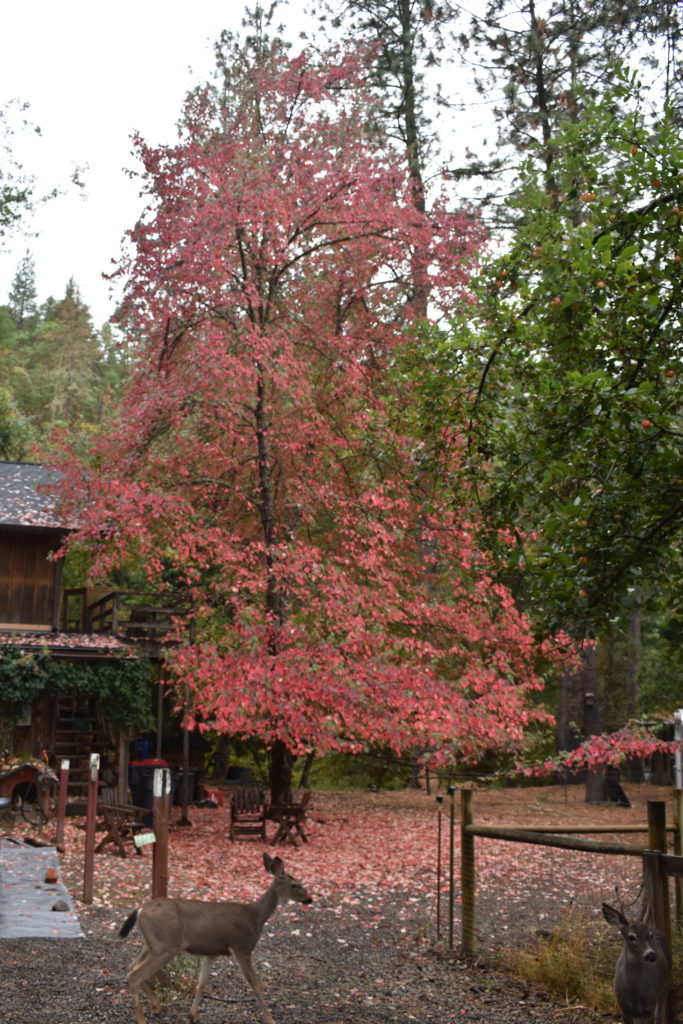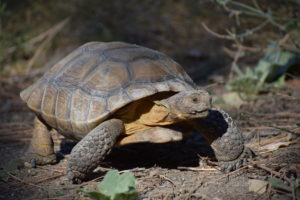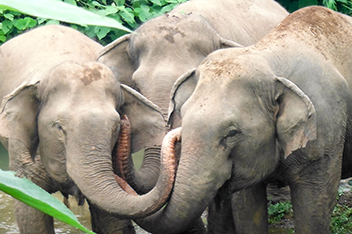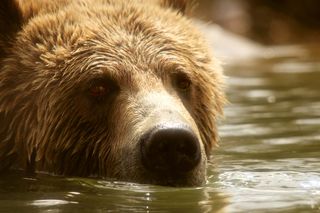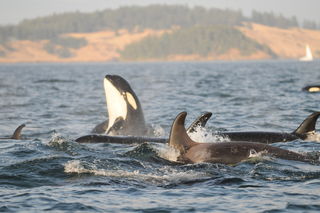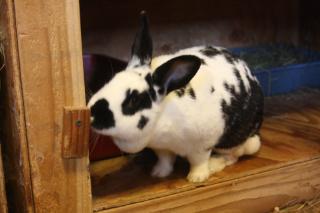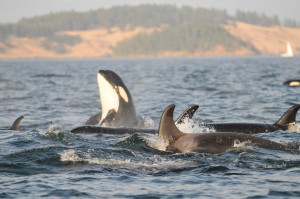
 Looking back, I have learned that it is the unexpected which has had the greatest influence in my life. Often, these events happen quietly, as if in respectful consideration of coming consequences. So it was, one early fall day.
Looking back, I have learned that it is the unexpected which has had the greatest influence in my life. Often, these events happen quietly, as if in respectful consideration of coming consequences. So it was, one early fall day.
I was sitting where forest meets field, enjoying the peace of near-sunset. Autumn daylight hours are shorter than those of summer’s green, but they seem much longer. Perhaps, the evening is tricked by the sun’s sleight of hand which make the pockets of sunlight lingering in the scatter of red and orange leaves seem like daylight still reigns.
It was at that moment of celestial pause when my gaze happened upon the Black Oak—the aged centurion standing guard next to our tiny cabin. Beside the Tree is a tall basalt rock. Atop it that evening was another kind of sentinel, a Ground Squirrel.
He was standing on two tiny-clawed feet, hands clasped high on his chest, staring out over the field. His face wore a transcendent expression of awe and appreciation. There was no mistaking that the Ground Squirrel was—similar to me—taking in the beauty of the day’s last light. He was in rapture.
This realization was startling. Before this, Ground Squirrels were not on my best friend list. They intruded on everything and everyone. Nothing and no one was safe. They shamelessly and fearlessly push away full grown Deer and Wild Turkeys to get at the seed spread out on the grass. They ravage shoes, boxes, bags—anything that serves for their nests. The cabin’s dining room floor sank a good eight inches underneath the iron wood stove after vigorous Ground Squirrel tunneling. In all fairness, how were they to know, or care, that the pioneer-aged cabin was built directly on Nature’s skin and that their work would eventually open a crack large enough for the slender form of a Rattlesnake to enter the room and take residence under a chair next to the kitchen. I regarded Ground Squirrels as marauders—cute, but marauders all the same.
All these less than positive thoughts vanished when I discovered Ground Squirrel aesthetics. Suddenly, the objectifying wall behind which I stood, vanished. But, the moment passed quickly. In that short space of time, when the day’s gold became evening’s gray, the Squirrel left for home.
Brief as the encounter was, my perception of Ground Squirrels and life shifted. My sense of reality changed; its centroid sank into a space far and away from the choppy surface waters of conceptual mind to the depths of quiet. This is where I had crossed paths with the Doe.
When the Doe and I met, it was an awakening to Nature consciousness. I became aware that the space of soy este where I had occupied during the majority of my childhood, was where I interacted and shared with Animals and Trees. The resonance that the Doe had woken, opened wider when I met Asa. Until then, while I meditated, I sat in the space where the Doe and I had met, in the vista of soy este. Asa changed this.
She demanded that I move, go further, walk with her in this space. So I did. I made a point of going to Ground Squirrel zendo—to the grassy slopes that roof their burrowed castles, the places they dig and plant their stores, under the Oak and Pine Trees where the Deer rest in the heat of day. I followed the Squirrels – as best I could – as not only are they remarkable agile, but Ground Squirrels have a knack of telescoping their seemingly boneless bodies and vanishing, snakelike, into hairline cracks. This was more than a tracking exercise. Asa wanted me to see her world from her point of view, travel, sense, see and smell Nature the way she did.
Animals are often referred to as “teachers,” but that has not been my experience. Although Asa and friends purposefully helped me, I do not believe they see me as a student— a somewhat limited, unschooled friend, perhaps, but not a student. Their profound ethic of equality and equanimity precludes any sense of hierarchy upon which humans always seem to insist.
Of course, Ground Squirrels and other Animals know the difference between a human and one of their own. Yet, as I experienced Asa, the real medium of connection lay far deeper, well below form, beneath the individual suits we wear. She demanded something more from me than had the Doe. Asa commanded me to take a step deeper, drop another veil of human privilege – the composite of imperceptible barriers which tell us that we, humans, are different and apart from Ground Nature.
First encounters together stretched from many minutes to much longer. During these sessions, Asa would periodically return to her burrow under the Douglas Fir, store a few berries, then return next to me to resume breaking bread. she was one of many Squirrels who regularly raided hearth and home, but unlike others, she had a head tilt. While she foraged well enough, the disease or injury-caused condition put her at some disadvantage. We soon took to meeting in the evenings and sharing morsels of baguette, berries, and wine (the latter I saved for myself). It became a daily ritual. The other Squirrels obviously understood the exclusive nature of our meetings, as they never tried to partake of Asa’s fare.
When Summer eased into Fall, Asa’s visits shortened until one day, she did not return. By that time, the train of storms had begun to roll by and the Squirrel community had—as their name bespeaks—gone to ground to hibernate. Because Ground Squirrels sometimes venture out briefly when the cold temporarily lifts, I put a few berries and a piece of baguette at Asa’s door. Once, I was lucky enough to spot her coming out to retrieve her goods. She poked her head out, looked at me—head tilted to one side, the upside eye meeting mine—then dragged the food in and disappeared. It was the last time I saw her.
I don’t know whether she died during or after hibernation. It is possible that when she emerged she was grabbed by a Fox, Bobcat or Raccoon. Sometimes, drowsing Ground Squirrels are dug out by hungry omnivores. Other than her head tilt she showed no signs of decline, and by the season’s end she was quite plump. But, Ground Squirrels and Bears are known to pass in their sleep.
I don’t think I have ever grieved so deeply. It was not the acute, piercing, debilitating kind of grief which has possessed me on other occasions. The grief for Asa was a soft pain, a headache at the level of the soul. To this day, I mourn her.
I no longer mutter in frustration when I see the Ground Squirrels push their way to Turkey seeds or scramble up the water heater in the garage to tear apart more ceiling insulation for their nests. These days, I go out of my way to support the Ground Squirrel community by putting food at their burrow entrances and handfuls of combed-out Dog, Rabbit, and Cat fur to line their nests.
I hope when Asa and I meet again, I will have evolved to Ground Squirrel consciousness.


